
Bitter Nightshade
July 7th, 2011
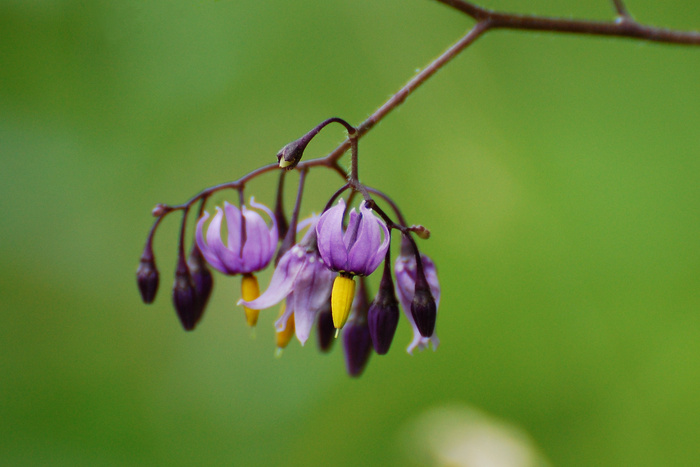
1680x1050 wallpaper
One of my favorite wildflowers. Look for these little purple and yellow beauties on vines intertwined with other plants. Later in the year, the flower clusters turn into berry clusters. The berries are poisonous to mammals, but birds eat them without harm.
Okanagan Vacation 15 - Departure
July 2nd, 2011
There was a beautiful sunrise on our way to the airport.
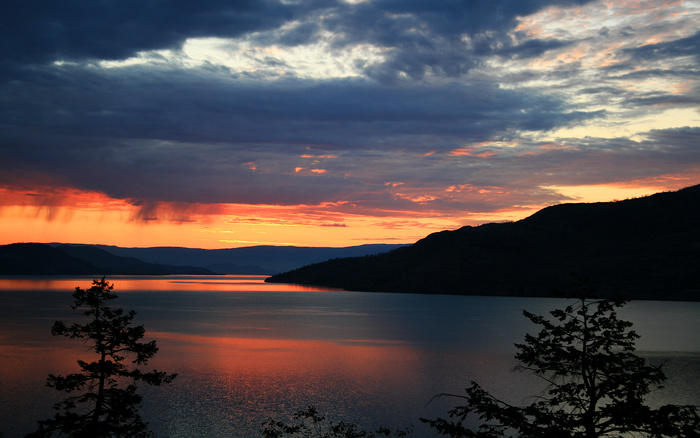
Photo by Michael Britton, wallpaper available
This concludes my photo tour of the Okanagan! The permanent gallery for all my best pictures from this trip is here. This does not include photos taken by my husband, which are stored here instead.
Triplist: 98 bird species including 40 lifers, plus 4 species heard only. Details below the cut.
( In here )
Okanagan Vacation 14 - Chute Lake
July 1st, 2011
Our final outing took us up to Chute Lake resort, where I was pleased to find a well-patronized set of bird feeders. One of the patrons was a Steller's Jay. The feeders themselves were hidden behind greenery, but I could catch him on camera as he perched on the lodge waiting his turn.

1680x1050 wallpaper
The woods along Chute Lake Road had been severely burned by forest fire in 2003. This was to thank for one of my lifers of the trip--a bird which, believe it or not, considers burned woods to be ideal habitat! Olive-Sided Flycatchers like open areas with abundant dead trees. They use the dead trees as hunting perches, and the openness of the habitat means they can easily see the flying insects on which they prey.
There are a number of "fire follower" species, a few of whom would even go extinct if humans successfully suppressed all forest fires (and didn't do planned burns.) The Kirtland's Warbler requires stands of young Jack Pine for nesting. Jack Pine cones open and release their seeds only when the resin that seals them shut is melted by intense heat--say, heat from a forest fire. Without fire, the Kirtland's Warbler's habitat disappears. There are only a few thousand of them left in the world.
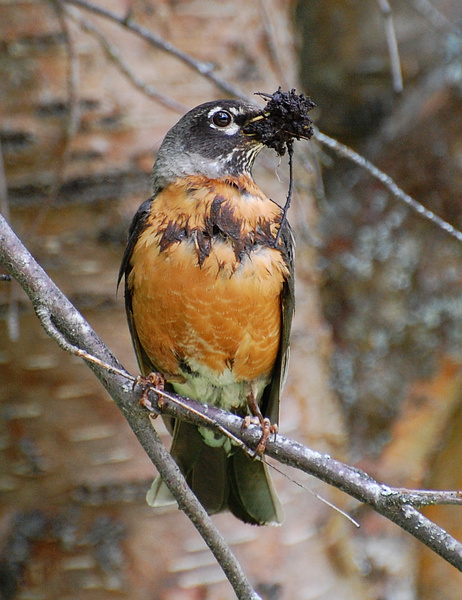
There's a story behind this robin. You could call her "the Varied Thrush that wasn't." Varied Thrush is a unique species of western Canada that looks somewhat like a robin with a dark band across the breast. So when Mike said he'd seen a robin with a breast band, I perked up instantly.
But when I saw the bird for myself, what I saw was indubitably a robin...she had the calls of a robin, the eye ring of a robin (as opposed to the Varied Thrush's orange eye stripe), and the tameness of a robin. She blithely disregarded us as she flew back and forth building her nest on a low pine branch. I was forced to conclude that the dark breast band which had gotten me so excited was either an aberration or (as occurs to me now) it was mud--she had simply dirtied herself up in the process of nest-building.
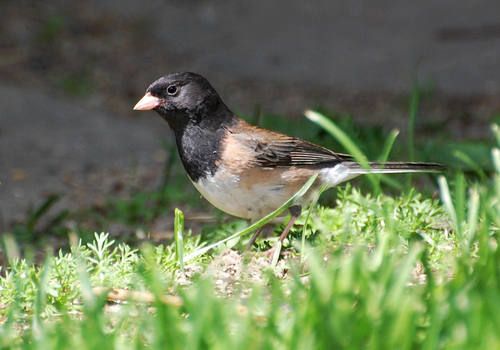
The Oregon Juncos foraging below the resort feeders were somewhat more amenable to the camera than the ones on Mount Kobau had been.
There was a hummingbird feeder at the resort as well, and it was thanks to that I got my 40th and final lifer of the trip: an eensy-weensy Rufous Hummingbird.
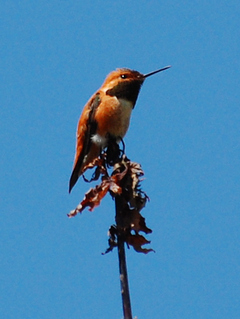
Okanagan Vacation 13 - Lake Vaseux
June 30th, 2011
I'd been told, by someone who had been out west, that Black-Billed Magpies were going to be "dirt birds"--i.e., common as dirt. They weren't, at least not in early June. I had an especially hard time finding one who was willing to sit still for the camera. On our trip to Lake Vaseux, though, I finally found the motherload: a farmyard with a whole flock of magpies in it!
It was interesting watching their response to pishing--a measured, intelligent response, rather than the Pavlovian-bell reaction of your typical songbird. No visible reaction at first, then magpies hopped into view on various prominent lookout posts. As I kept on pishing but no raptor or other danger appeared, they brushed it off and went back about their business.
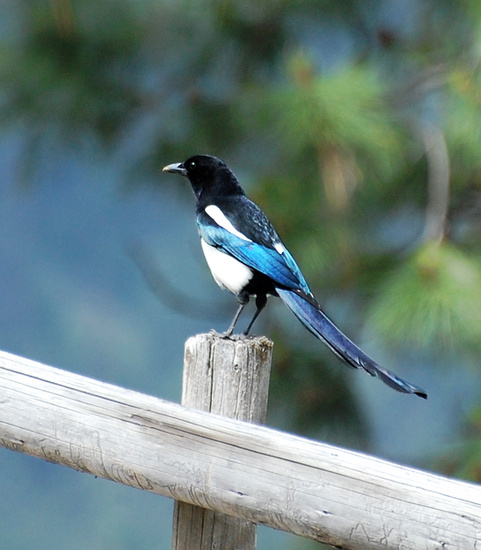
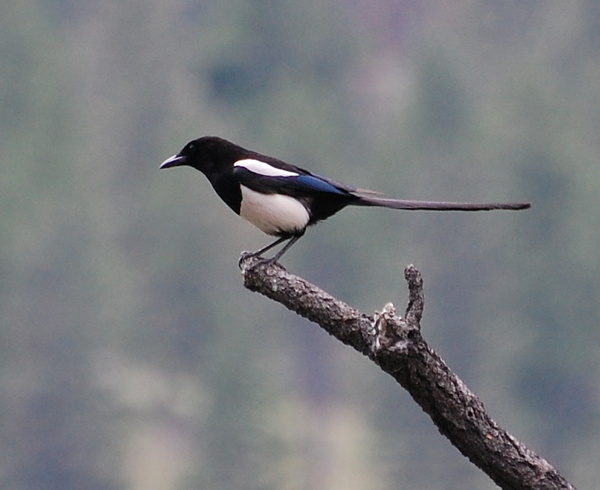
We originally planned a trip to Lake Vaseux because our tour guide had suggested that we might find Bighorn Sheep there. We were not disappointed. We spotted a group of females and lambs up on a ledge. They were quite a distance away, but still seemed to find our attention disconcerting. They watched us pointedly, then moved away higher up the ledge and out of view.
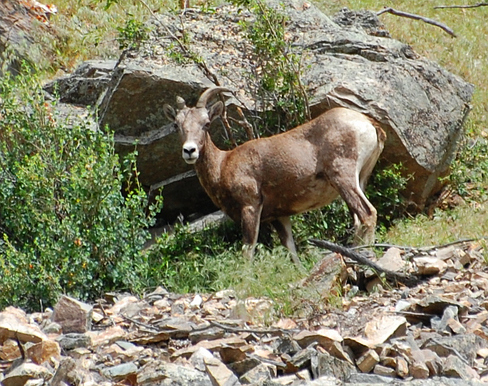
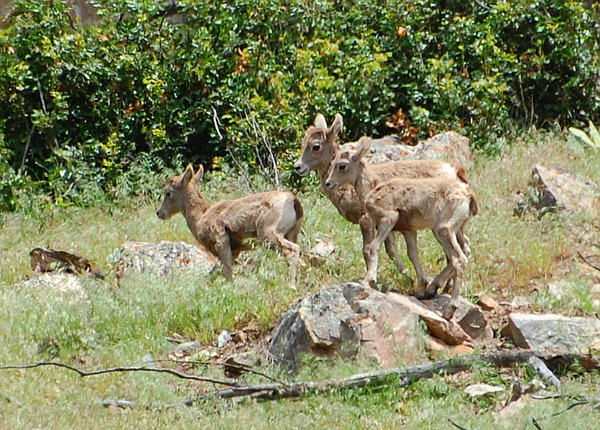
Okanagan Vacation 12 - Behind Brin de Soleil
June 29th, 2011
On my second walk behind Brin de Soleil, I noticed these beautiful red and yellow wildflowers in bloom. "Blanketflowers", I think they're called--gaillardia aristata. Showy cultivars of this species are popular in gardens.

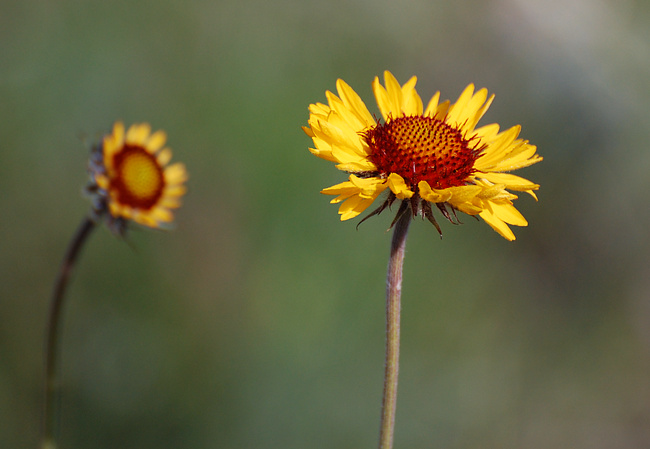
1680x1050 wallpaper
I also discovered a Pygmy Nuthatch at the nest. She was flying back and forth, carrying insects in her bill and poking her head into a hole that looked no bigger around than a quarter--hard to believe there was a nest of baby birds in there!
She wouldn't actually go to the nest with me close by, though. She just perched on the tree, chirping indignantly. I snapped a few pictures and left her alone.
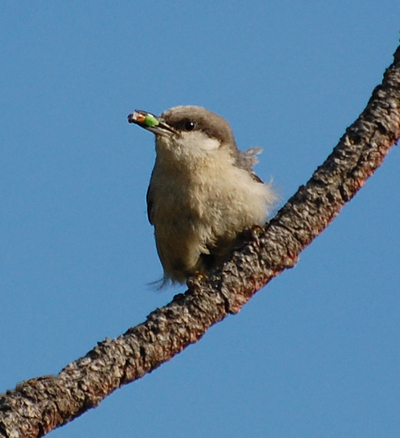
Okanagan Vacation 11 - Max Lake
June 28th, 2011
A couple photos from our trip to Max Lake:
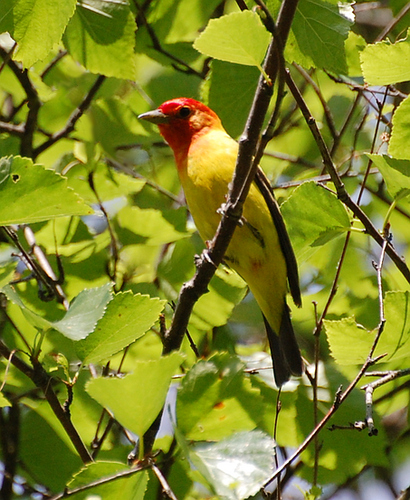
Western Tanager

Ornate Tiger Moth
Okanagan Vacation 10 - Apex Mountain (beasties)
June 27th, 2011
Another point of interest up Apex Mountain was the colony of Yellow-Bellied Marmots. We ran into them in a few places. Like woodchucks, but svelter and cuter. We confused them with these guys at first, until we noted the marmots' larger size and facial markings.

1680x1050 wallpaper
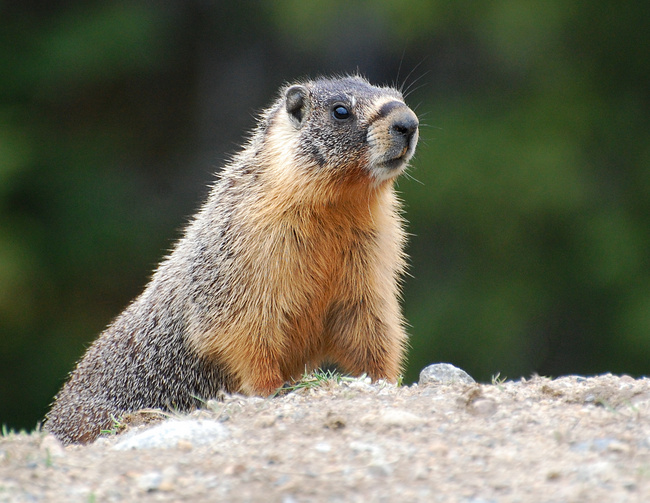
1680x1050 wallpaper

Okanagan Vacation 9 - Apex Mountain (birds)
June 26th, 2011
Our next trip was up another snow-capped mountain. We had heard there was a chairlift up there that operated even in summer. We figured it would at least be a fun ride and might be a way to see some truly alpine birds. Alas, our information was apparently out of date.
The ski village, though, was a gold mine of Clark's Nutcrackers, a species I'd been seeking since my arrival. Clark's Nutcracker is one of the west's truly unique birds, with no close cousin in the east (though it does have one in Eurasia.) It's a corvid (crow relative) of the Rocky Mountains specialized for eating pine seeds. Like a squirrel, it caches large amounts of food in fall and uses these caches to survive the harsh winters. Clark's Nutcrackers form long-lasting pair bonds and males contribute equally to childrearing, even brooding eggs in the nest.
The village was teeming with them. They were backyard birds there, clearly comfortable around humans and human habitation.
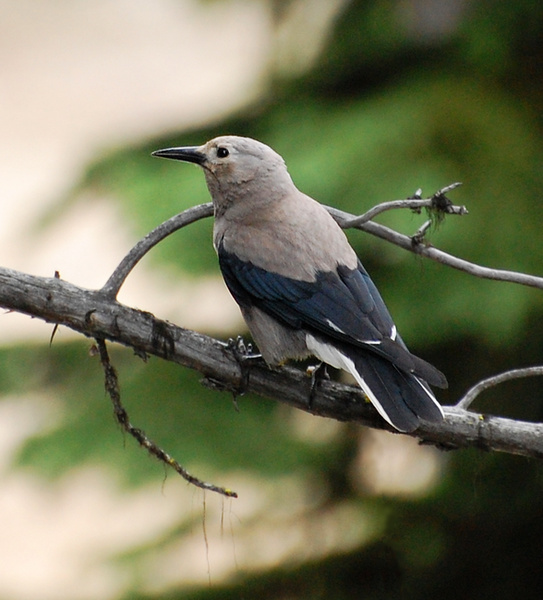
"Corvids" was the theme of the trip, in fact. We saw lots of Gray Jays. Gray Jays occur coast to coast in Canada's mountainous and boreal regions. (The nearest place to find them in our area is Algonquin Park.) They're big fluffy gray and white birds, quite tame, even known to feed from the hand--sort of like overgrown chickadees!
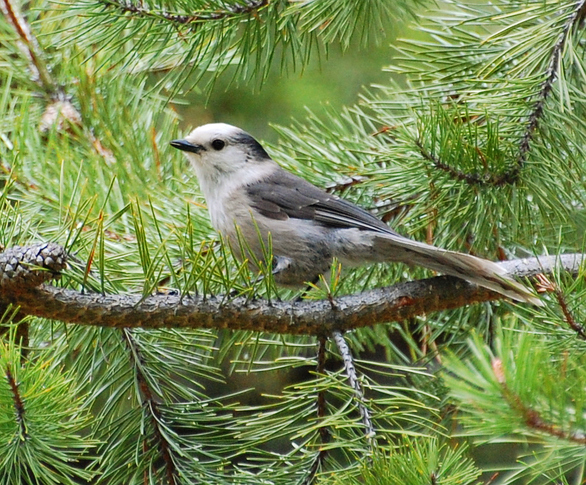
A Steller's Jay made a brief appearance amidst one flock of Gray Jays.

Okanagan Vacation 8 - Behind Brin de Soleil
June 24th, 2011
There was a hiking trail behind Brin de Soleil, winding up and along the slope. The owners pointed it out to me. It went through private property, technically, but property used only to graze cattle and only at certain times of the year. Guests at the B&B were welcome to use it--they had even cut a hole in the barbed wire fence so you could get through.
It was beautiful up there, the view even more panoramic than from the front yard, and I saw some great birds, including two lifers. My first MacGillivray's Warbler occurred here. MacGillivray's is a shy, skulking warbler (like its close relative, our own Mourning Warbler)--but this one had the single best response to pishing that I've ever seen. He had been laying low in the underbrush and not making a sound. As soon as I pished just a little, he hopped around in the bushes for the next five minutes, chirping constantly, giving me excellent views of himself.
On the way back from one walk, on a post just outside Brin de Soleil, I finally found a California Quail who was willing to sit still for the camera! I inched towards him, photographing as I went. He didn't flush into the grass until I was about ten feet away. Result: a wallpaper-quality shot.

1680x1050 wallpaper
I also got my first photograph of a magpie on that walk.
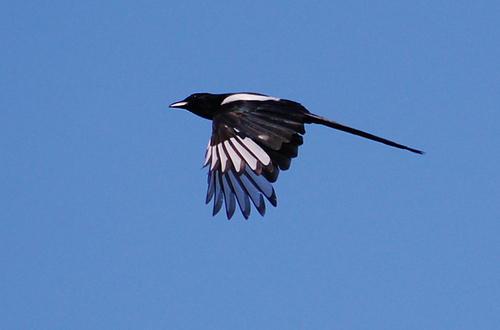
Mule Deer were a common sight, as they were elsewhere in the Okanagan. We saw the familiar White-Tailed Deer too, but Mule Deer were the majority, instantly recognizable by their oversized ears.
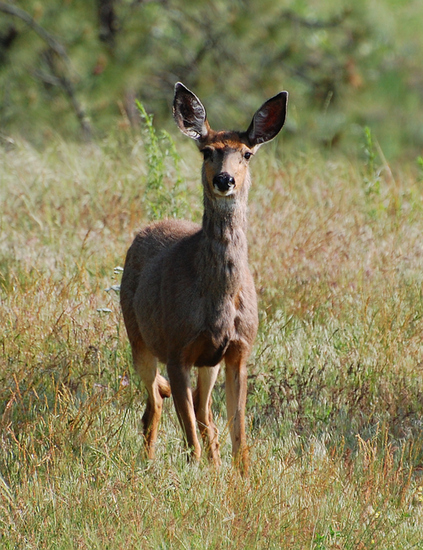
I was fascinated by the way Mule Deer moved. They would trot along the slope with this incredibly gay, light-footed, bounding gait. Like they were weightless. Or like something out of a Walt Disney movie, or Pepé Le Pew chasing Penelope Pussycat. Back home I learned that this seemingly cheerful gait is actually a form of stotting--a way of demonstrating ones fitness to a potential predator (in this case, me.). Mule Deer do it, White-Tailed Deer don't. It's as if the animal is saying, "look at this. Look how confident I am. Look how easily I move. I'm not even bothering to break into a proper run. You should hunt someone else 'cause you're not gonna catch me."
Here's some video to show you what I'm talking about. In this case it's juveniles stotting for the fun of it. Watch them from about 15 seconds in.
Okanagan Vacation 7 - Arrival at Brin de Soleil
June 23rd, 2011
Our second B&B, Brin de Soleil, was also wonderful. The owners were very friendly and went above and beyond to make our stay comfortable. It was actually built on the side of the mountain--the driveway was so steep it required a switchback! So we got a gorgeous panoramic view of the Okanagan valley every time we went out in the front yard.

Photo by Michael Britton, wallpaper available.
|
